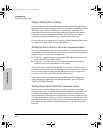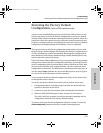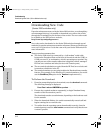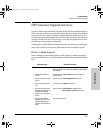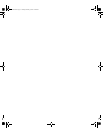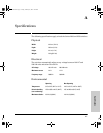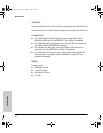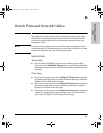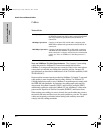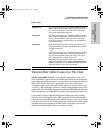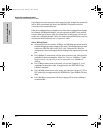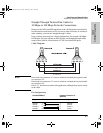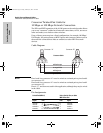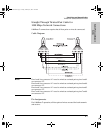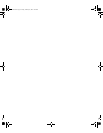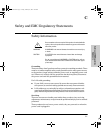
B-2
Switch Ports and Network Cables
Switch Ports and Network
Cables
Cables
Twisted-Pair
Note on 1000Base-T Cable Requirements. The Category 5 networking
cables that work for 100Base-TX connections should also work for
1000Base-T, as long as all four-pairs are connected. But, for the most robust
connections you should use cabling that complies with the Category 5E
specifications, as described in Addendum 5 to the TIA-568-A standard (ANSI/
TIA/EIA-568-A-5).
Because of the increased speed provided by 1000Base-T (Gigabit-T), network
cable quality is more important than for either 10Base-T or 100Base-TX.
Cabling plants being used to carry 1000Base-T networking must comply with
the IEEE 802.3ab standards. In particular, the cabling must pass tests for
Attenuation, Near-End Crosstalk (NEXT), and Far-End Crosstalk (FEXT).
Additionally, unlike the cables for 100Base-TX, the 1000Base-T cables must
pass tests for Equal-Level Far-End Crosstalk (ELFEXT) and Return Loss.
When testing your cabling, be sure to include the patch cables that connect
the switch and other end devices to the patch panels on your site. The patch
cables are frequently overlooked when testing cable and they must also
comply with the cabling standards.
10 Mbps Operation Category 3, 4, or 5 100-ohm unshielded twisted-pair (UTP)
or shielded twisted-pair (STP) cable, complying with IEEE
802.3 Type 10Base-T specifications, fitted with RJ-45
connectors
100 Mbps Operation Category 5 100-ohm UTP or STP cable, complying with
IEEE 802.3u 100Base-TX specifications, fitted with RJ-45
connectors
1000 Mbps Operation Category 5 100-ohm 4-pair UTP or STP cable, complying
with IEEE 802.3ab 1000Base-T specifications, fitted with
RJ-45 connectors—Category 5E or better is recommended
(please see “Note on 1000Base-T Cable Requirements”,
below)
2353-ed2.book Page 2 Friday, February 9, 2001 6:00 PM



